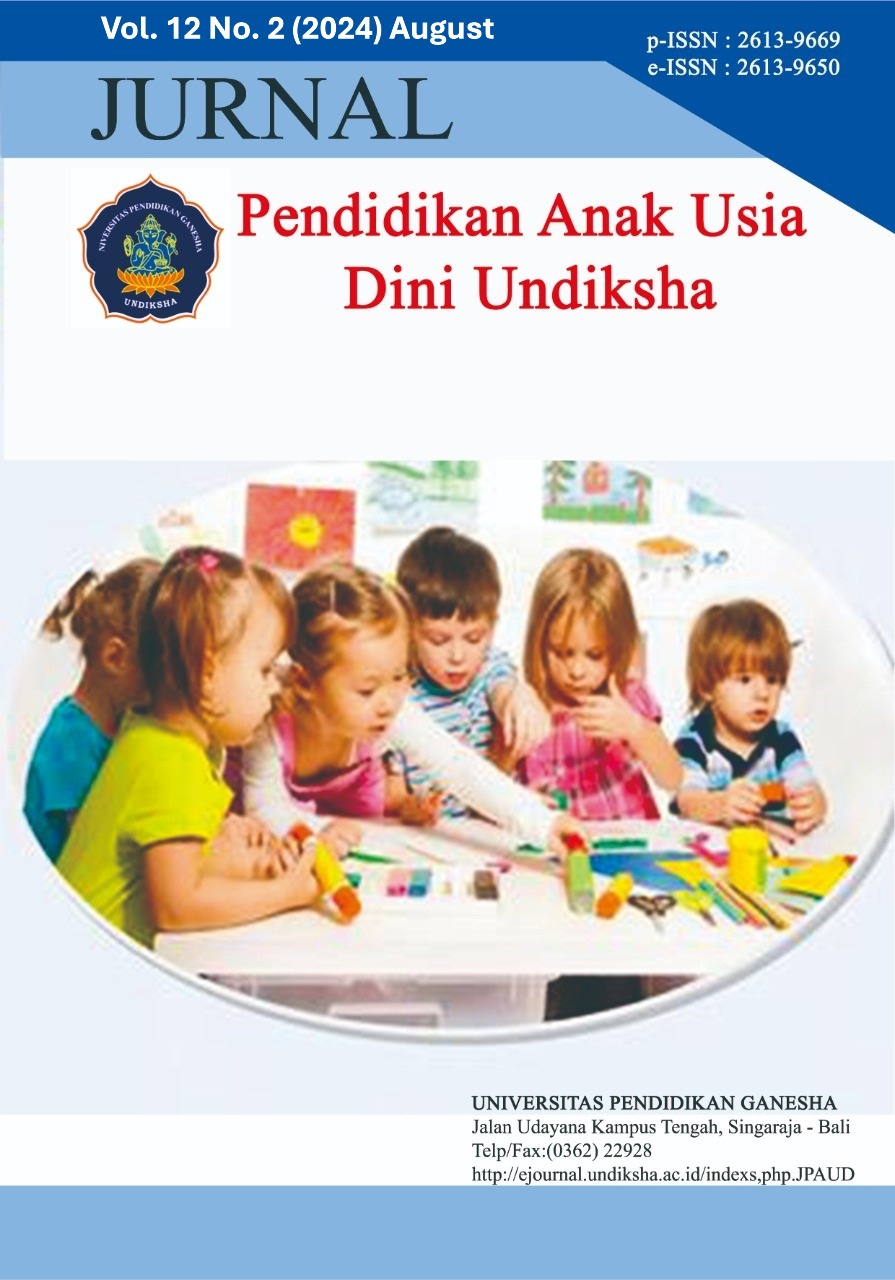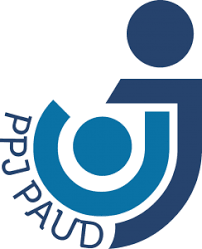Mobile Solution for Child Abuse Reporting: Enhancing Accessibility and Protection through SI-ADU
DOI:
https://doi.org/10.23887/paud.v12i2.62641Keywords:
Child Abuse, Mobile Application, Complaint System, Child ProtectionAbstract
This study is motivated by the increasing cases of child abuse in Indonesia, with perpetrators often coming from close family members. This study to design an application that facilitates abuse victims in filing complaints. The research method used is Research & Development (R&D). Data collection techniques include field observation using observation sheets and interviews, a checklist for assessing abuse cases, questionnaires, expert assessment instruments, field notes, a questionnaire for evaluating the effectiveness of the application, and a checklist for assessing the application's usefulness. The subjects of this research are children, particularly those in early childhood. The result of this research is the design of a mobile-based child protection application, SI-ADU, which can be accessed by children or parents to file complaints. The implications of this study suggest that it can help the Gorontalo local government reduce the number of child abuse cases by up to 19% since the pilot testing was conducted. The easy access and use of techniques to defend or protect oneself from abuse, as well as rapid mitigation for child victims of abuse through smartphones, can contribute to improving safety and preventing violence within children's communities. The conclusion of this study is that the SI-ADU application can be an effective solution in addressing child abuse by providing victims with quick and easy access to report abuse cases and involve authorities in the handling of these cases.
References
Agustin, M., Saripah, I., & Gustiana, A. D. (2018). Analisis tipikal kekerasan pada anak dan faktor yang melatarbelakanginya. JIV-Jurnal Ilmiah Visi, 13(1), 1–10. https://doi.org/10.21009/JIV.1301.1.
Aka, K. A. (2019). Integration Borg & Gall (1983) and Lee & Owen (2004) models as an alternative model of design-based research of interactive multimedia in elementary school. Journal of Physics: Conference Series, 1318(1), 12022. https://doi.org/10.1088/1742-6596/1318/1/012022.
Ariani, N. K., & Ujianti, P. R. (2021). Media Video Animasi untuk Meningkatkan Listening Skill Anak Usia Dini. Jurnal Pendidikan Anak Usia Dini Undiksha, 9(1), 43–52.
Arvidson, J., Kinniburgh, K., Howard, K., Spinazzola, J., Strothers, H., Evans, M., Andres, B., Cohen, C., & Blaustein, M. E. (2011). Treatment of complex trauma in young children: Developmental and cultural considerations in application of the ARC intervention model. Journal of Child & Adolescent Trauma, 4, 34–51. https://doi.org/10.1080/19361521.2011.545046.
Bowen, D. J., Kreuter, M., Spring, B., Cofta-Woerpel, L., Linnan, L., Weiner, D., Bakken, S., Kaplan, C. P., Squiers, L., & Fabrizio, C. (2009). How we design feasibility studies. American Journal of Preventive Medicine, 36(5), 452–457. https://doi.org/10.1016/j.amepre.2009.02.002.
Caron, F., Plancq, M.-C., Tourneux, P., Gouron, R., & Klein, C. (2020). Was child abuse underdetected during the COVID-19 lockdown? Archives de Pédiatrie, 27(7), 399–400. https://doi.org/10.1016/j.arcped.2020.07.010.
Christiana, E. (2019). Identifikasi Bentuk kekerasan dan Penangannya di Lingkungan Sekolah Dasar. Child Education Journal, 1(3), 58–64. https://doi.org/10.33086/cej.v1i2.1368.
Collins, T. M. (2017). A child’s right to participate: Implications for international child protection. The International Journal of Human Rights, 21(1), 14–46. https://doi.org/10.1080/13642987.2016.1248122.
Craven, S., Brown, S., & Gilchrist, E. (2006). Sexual grooming of children: Review of literature and theoretical considerations. Journal of Sexual Aggression, 12(3), 287–299. https://doi.org/10.1080/13552600601069414.
Crittenden, P. (2013). Raising parents: Attachment, parenting and child safety. Routledge.
DePanfilis, D. (2006). Child neglect: A guide for prevention, assessment, and intervention. US Department of Health and Human Services, Adminsitration for Children and ….
Failin, F., Yuserlina, A., & Ibrahim, E. (2022). Protection Of Children’s Rights And Women’s Rights As Part Of Human Rights In Indonesia Through Ratification Of International Regulations. JCH (Jurnal Cendekia Hukum), 7(2), 312–328. https://e-jurnal.stih-pm.ac.id/index.php/cendekeahukum/article/view/557/317.
Falikhah, N. (2017). Bonus demografi peluang dan tantangan bagi Indonesia. Alhadharah: Jurnal Ilmu Dakwah, 16(32). https://doi.org/10.18592/alhadharah.v16i32.1992.
Finkelhor, D. (2008). Childhood victimization: Violence, crime, and abuse in the lives of young people. oxford university Press.
Fortier, K., Parent, S., & Lessard, G. (2020). Child maltreatment in sport: smashing the wall of silence: a narrative review of physical, sexual, psychological abuses and neglect. British Journal of Sports Medicine, 54(1), 4–7. https://doi.org/10.1136/bjsports-2018-100224.
Gustiani, S. (2019). Research and development (R&D) method as a model design in educational research and its alternatives. Holistics (Hospitality and Linguistics): Jurnal Ilmiah Bahasa Inggris, 11(2).
Hall, R. C. W., & Hall, R. C. W. (2007). A profile of pedophilia: definition, characteristics of offenders, recidivism, treatment outcomes, and forensic issues. Mayo Clinic Proceedings, 82(4), 457–471. https://doi.org/10.4065/82.4.457.
Harahap, I. (2022). Child Protection Laws In Indonesia; Related To Islamic Spirit. Syiah Kuala Law Journal, 6(2), 213–226. https://doi.org/10.24815/sklj.v6i2.29121.
Ilham, R. N. (2023). Legal Aspects of Child Protection in the Perspective of National Law. QISTINA: Jurnal Multidisiplin Indonesia, 2(1), 701–706. https://doi.org/10.57235/qistina.v2i1.480.
Kiili, J., & Moilanen, J. (2019). Participation as a methodological and ethical issue in child protection research. Journal of Children’s Services, 14(3), 143–161. https://doi.org/10.1108/JCS-02-2019-0009.
Lonne, B., Harries, M., Featherstone, B., & Gray, M. (2015). Working ethically in child protection. Routledge.
Maulana, R., Arbas, C., & Aziz, F. A. A. (2023). Juridical Analysis of Abortion Legalization in Government Regulation Number 61 Of 2014 Concerning Reproduction Health. Journal of Law and Sustainable Development, 11(12), e1116. https://doi.org/10.55908/sdgs.v11i12.1116.
McCoy, M. L., & Keen, S. M. (2022). Child abuse and neglect. Routledge.
Meldina, T., Melinedri, M., Agustin, A., & Harahap, S. H. (2020). Integrasi Pembelajaran IPS pada Kurikulum 2013 di Sekolah Dasar. AR-RIAYAH : Jurnal Pendidikan Dasar, 4(1), 15. https://doi.org/10.29240/jpd.v4i1.1572.
Nazir, A. H., & Liljenström, H. (2015). A cortical network model of cognitive and emotional influences in human decision making. Biosystems, 136, 128–141. https://doi.org/10.1016/j.biosystems.2015.07.004.
Nosrati, M., Karimi, R., & Hasanvand, H. A. (2012). Mobile computing: principles, devices and operating systems. World Applied Programming, 2(7), 399–408. https://citeseerx.ist.psu.edu/document?repid=rep1&type=pdf&doi=4f570f358c1068a67021f0e93486fbf816c89530.
Organization, W. H. (2019). INSPIRE handbook: Action for implementing the seven strategies for ending violence against children. World Health Organization.
Penedo, F. J., Oswald, L. B., Kronenfeld, J. P., Garcia, S. F., Cella, D., & Yanez, B. (2020). The increasing value of eHealth in the delivery of patient-centred cancer care. The Lancet Oncology, 21(5), e240–e251. https://doi.org/10.1016/S1470-2045(20)30021-8.
Rahawarin, F. (2021). Analysis of Criminal Law Sanctions’ Application Against Statutory Rape from the Positive Law Perspective on Ambon Island and Lease Islands. Technium Soc. Sci. J., 25, 180. https://www.techniumscience.com/index.php/socialsciences/article/download/5065/1736.
Rees, C. (2010). Promoting children’s emotional wellbeing. Paediatrics and Child Health, 20(9), 439–446. https://doi.org/10.1016/j.paed.2010.07.001.
Rosenthal, C. M., & Thompson, L. A. (2020). Child abuse awareness month during the coronavirus disease 2019 pandemic. JAMA Pediatrics, 178(8), 812. https://doi.org/10.1001/jamapediatrics.2020.1459.
Schilling, S., & Christian, C. W. (2014). Child physical abuse and neglect. Child and Adolescent Psychiatric Clinics, 23(2), 309–319.
Sitompul, M. N. (2024). Comparison Of Rape In Indonesian Positive Law, Islamic Law And South Korean Law. Pena Justisia: Media Komunikasi Dan Kajian Hukum, 23(3), 848–861. https://doi.org/10.31941/pj.v23i3.4225.
Triwulandari, E., & Tarsono, E. (2022). Socio-Juridic Analysis of Abortion According to Article 75 of Law Number 36/2009 Concerning on Health and Law Number 35/2014 Concerning on Child Protection. IUS POSITUM (Journal of Law Theory and Law Enforcement), 43–59. https://journal.jfpublisher.com/index.php/jlte/article/view/68/61.
Winstok, Z., & Sowan-Basheer, W. (2015). Does psychological violence contribute to partner violence research? A historical, conceptual and critical review. Aggression and Violent Behavior, 21, 5–16. https://doi.org/10.1016/j.avb.2015.01.003.
Winters, G. M., Kaylor, L. E., & Jeglic, E. L. (2022). Toward a universal definition of child sexual grooming. Deviant Behavior, 43(8), 926–938. https://doi.org/10.1080/01639625.2021.1941427.
Wulandari, H., Supriyati, Y., & Jalal, F. (2018). Evaluation of Holistic Integrative Program in Early Childhood Education and Development (PAUD HI). Int. J. of Multidisciplinary and Current Research, 6. https://www.researchgate.net/profile/Yetti-Saefudin/publication/350808656.
Zaitun, Z., & Suhartini, S. (2024). Upaya Penguatan Program Stimulasi, Deteksi Dan Intervensi Dini Tumbuh Kembang (Sdidtk) Dengan Menggunakan Pendekatan Buku Rapor Sehatku. Jurnal Abdimas Bina Bangsa, 5(2), 1842–1850. https://doi.org/10.46306/jabb.v5i2.1406.
Downloads
Published
How to Cite
Issue
Section
License
Copyright (c) 2024 Pupung Puspa Ardini, Sri Rawanti, Arif Dwinanto, Arbin Janu Setiyowati, Dewo Agung Nugroho Narosaputra, Putu Aditya Antara, Branislav Pupala

This work is licensed under a Creative Commons Attribution-ShareAlike 4.0 International License.
Authors who publish with the Jurnal Pendidikan Anak Usia Dini Undiksha agree to the following terms:
- Authors retain copyright and grant the journal the right of first publication with the work simultaneously licensed under a Creative Commons Attribution License (CC BY-SA 4.0) that allows others to share the work with an acknowledgment of the work's authorship and initial publication in this journal.
- Authors are able to enter into separate, additional contractual arrangements for the non-exclusive distribution of the journal's published version of the work (e.g., post it to an institutional repository or publish it in a book), with an acknowledgment of its initial publication in this journal.
- Authors are permitted and encouraged to post their work online (e.g., in institutional repositories or on their website) prior to and during the submission process, as it can lead to productive exchanges, as well as earlier and greater citation of published work. (See The Effect of Open Access)











